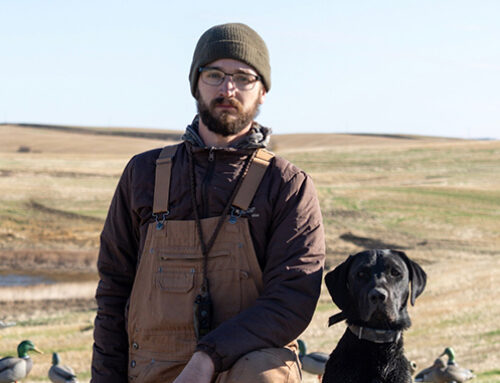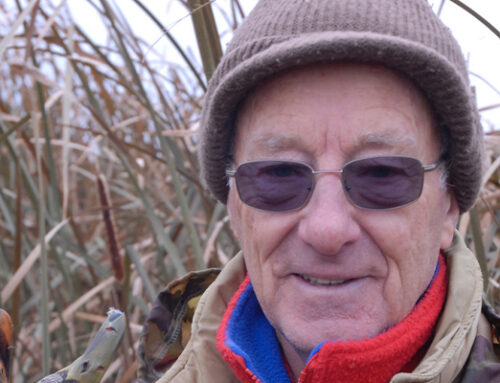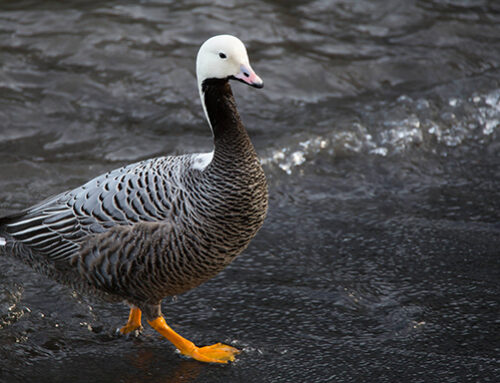No Science, No Duck Hunting?
Duck hunting is under attack in places like Australia and Argentina, which lack North America’s science-based defenses

UPDATE: On Dec. 14, 2023, Australia’s Select Committee Report on Native Birds recommended duck hunting remain legal in South Australia but with stricter regulations and penalties. For more info: https://www.fieldandgame.com.au/news/southaustraliacommitteevotestoretaingamebirdhunting2024/
By Kyle Wintersteen
Under the homepage headline, “Duck shooting: cruel and dangerous for Australian wildlife,” the anti-duck-hunting group, Animals Australia, offers the following depiction of waterfowling: “For as long as some state governments permit the senseless ‘recreational’ slaughter of ducks, these sensitive native animals will be forced to endure shattered bills, fractured limbs, punctured organs, and ducklings will be left without parents. … The days are numbered for this cruel ‘recreational’ activity, but while state governments stall on making the obvious, and kindest, decision, wildlife is paying the ultimate price.”

The group’s ploy appears multi-pronged: Humanize the ducks; villainize the hunters; use gratuitously graphic language; and spread emotionally charged, objective falsehoods (“ducklings will be left without parents!”) to an uninformed public.
One could easily dismiss Animals Australia’s arguments as preposterous, given that we in North America have seen similar assaults on reason by PETA and the HSUS (examples: Sunday hunting prohibitions offer wildlife a “day of rest”; dove hunting kills “birds of peace”; and hunting with dogs is “cruel and unfair”), with little effect.
Despite some notable anti-hunting victories, including bans on hunting doves in Michigan, mountain lions in California and, for several years, black bears in New Jersey, there’s a tendency for hunters to be complacent. Some may even assert that, “A ban on hunting ducks could never happen here.”
Here’s the startling reality: Across Australia and other major regions of the globe, the anti-hunters are winning. They’re managing to restrict or even ban hunting—duck hunting, especially—across broad jurisdictions. And the same well-heeled, highly organized, and vehemently determined hunt-banners that swayed public opinion elsewhere are already at work in North American flyways.
This was apparent in August 2023, when Field & Game Australia—a hunter-led conservation group not unlike Delta Waterfowl—invited Joel Brice, Delta Waterfowl’s chief conservation officer, to offer his expertise. During the visit, Brice attended committee hearings weighing the fate of duck hunting in the state of Victoria.
“Here’s the thing that scares me about Australia,” Brice said, “While I was over there, I didn’t hear anything I hadn’t already heard in the United States. I heard arguments that duck hunting is cruel, that it’s unnecessary and, silliest of all, that you should buy your meat at the grocery store. It was all the same stuff, but the momentum and traction of the anti-hunting groups is huge. They have a political group—the Animal Justice party—committed to banning duck hunting. And because all the same ingredients exist here, I fear that Australia may have given me a glimpse into our future.”
Further, foreign anti-hunting groups have the significant advantage of an ingredient that’s not in the mix outside North America: a deeply informed, science-based approach to surveying waterfowl, setting hunting regulations, and monitoring harvest.
“North America’s waterfowl harvest regulations system relies on decades of data, and it was partly designed to legally defend duck hunting,” Brice said. “Australia would love to have our decades of research.”
North America’s system of setting waterfowl hunting regulations, called “Adaptive Harvest Management,” is globally unrivaled in the scope, longevity, and precision of its data. Here’s why Australia and other countries are rushing to develop something akin to AHM—and why its existence could prove invaluable in Delta’s fight to secure the future of duck hunting in the United States and Canada.

USFWS biologist Art Hawkins helped jump-start the breeding duck survey. Hawkins, far right, inspects a map with Delta’s Lyle Sowls and, at left, admires a Seabee aircraft.
Adaptive Harvest Advantage
By the early 1900s, it was clear that North America’s waterfowl were in decline, due principally to a persistent drought on the waterfowl breeding grounds combined with commercial harvest and habitat losses. Also problematic was the regulatory deference to states and provinces, which were ill-equipped to manage migratory species and, in turn, imposed arbitrary, inconsistent restrictions.
A recognition of these issues—along with a desire for sustainable management of ducks and geese—inspired the U.S. Congress to pass the Migratory Bird Act of 1913, which authorized the Secretary of Agriculture to set migratory bird hunting dates, “having due regard to the zones of temperature, breeding habits, and times and line of migratory flight” of the birds. The act’s teeth were solidified in 1918, when the Migratory Bird Treaty Act was signed by the United States and, with Great Britain acting on its behalf, Canada.
The intent of the MBTA included empowering the United States and Canada to set hunting regulations that offer ample harvest opportunities without detrimentally affecting waterfowl populations. It was a novel concept on paper—but how would the countries abide by it? How could they accurately track migratory populations over vast distances?
Visionary biologist Frederick C. Lincoln is credited with proposing the use of aircraft. At his insistence, in 1931 the U.S. Army flew him over waterfowl wintering on the Potomac River south of Washington D.C. The test flight left Lincoln convinced of the potential of aerial waterfowl surveys, and experimental flights increased over the next decade.
Meanwhile, in May 1946 at the Delta Waterfowl Research Station in Manitoba—the legacy property that spawned The Duck Hunters Organization—U.S. Fish and Wildlife Service pilot Robert Smith and USFWS biologist Art Hawkins set to work as the primary architects of an annual waterfowl breeding population survey. The Breeding Duck Population and Habitat Survey officially launched in May 1955, a monumental achievement that’s been conducted every spring since except in 2020 and 2021.
Nearly 70 years later, the data it provides remain pivotal drivers of Adaptive Harvest Management—the process of setting duck hunting regulations in the United States and Canada. Additional inputs to AHM include banding and other monitoring techniques; hunter harvest questionnaires (HIP surveys); “diary” surveys; and hunter-submitted wing surveys.
These data are an assurance that hunting regulations offer ample opportunities for sportsmen and women without affecting negative consequences for duck populations. Indeed, the science suggests that North America’s hunter harvest is mostly
“compensatory”—that is, populations wouldn’t increase even if seasons were eliminated.
Speaking of closed seasons, that’s the default of Adaptive Harvest Management, which technically only opens duck seasons—on a sliding scale that includes “restrictive,” “moderate,” and “liberal” regulations—when certain conditions, such as population sizes, are met.
This veritable mountain of waterfowl data continues to be collected, essentially, in adherence to the Migratory Bird Treaty Act. Importantly, however, in this era of evolving ideologies and divided politics, it serves as a defense against attacks on duck hunting, too. Should the HSUS sue the U.S. Fish and Wildlife Service over duck hunting (as it has over other wildlife-related matters), it would likely argue either that the USFWS is failing to accurately chart duck populations, or that duck populations are declining and hunting is a key contributing factor.
Fortunately these arguments don’t hold an ounce of marsh water in the face of seven decades of data on duck populations and hunter harvest. However, if some of the anti-hunting voices in Australia and Argentina are any indication, science and reason are no deterrent.

While professing to “rescue” wounded ducks, Aussie anti-hunters actively interfere with waterfowl hunting. Credit: Field & Game Australia
Danger ‘Down Under’
While Australia lacks a flagship waterfowl survey, the Eastern Australian Waterbird Survey has been conducted via a grid system since 1983. While ducks are not the survey’s primary focus, anti-hunters note that ducks are 75% below the survey’s long-term average, including a 58% decline from 2020 to 2021.
For many it’s a compelling argument, despite the survey’s much broader margins of error and decades narrower “long-term average” compared to North America’s breeding population survey.
“There’s not a place anywhere in the world, Australia included, that’s even a close second to what we have in place in North America,” said Ramsey Russell, who, as proprietor of GetDucks.com, is a leading expert on worldwide waterfowling. “It’s uniquely American. We’re passionate about the resource, we care about its perpetuity, and we’ve created a multi-billion dollar system that funds state, federal, and university monitoring.”
Lacking this level of population and hunter harvest data, it’s far more challenging to counter a claim that ducks are declining and hunting is to blame. Brice experienced this while attending Victoria’s “Select Committee” hearings on duck hunting.

Credit: Field & Game Australia
“There was a lot of discussion about the long-term and gradual declines of all waterbirds in the survey, not just ducks,” Brice said. “Dr. Richard Kingsford (an ecosystems ecologist at the University of New South Wales) testified that habitat losses are the root cause of the declines, including for ducks. However, he never flat out said duck hunting is not a cause of the decline. I wish he had, because to me habitat is clearly the issue.”
Still, even among biologists who might be sympathetic to hunting, a lack of data allows for ample gray area. And, unfortunately, Australia never designed a system by which hunting revenues help support population monitoring.
Such efforts were underway prior to Victoria’s committee hearings. And Victoria’s acceptance of an interim AHM-style system of setting duck hunting regulations in 2022 suggested hope for continued seasons.
Sadly, in late August the Select Committee recommended abolishing duck hunting throughout the state. If the state government acts on the recommendation—which was protested by members of the Select Committee, who accused their colleagues of colluding with anti-hunting activists and ignoring pro-hunting facts—Victoria would join the states of Western Australia, New South Wales, and Queensland in banning all duck hunting. Only South Australia and Tasmania would remain.
“If Victoria falls, the rest will go like dominoes,” Russell said. “I think it’s over. And Australia was one of the world’s most amazing places to be a duck hunter.”
Argentina’s Antis
Traveling hunters are a critical source of revenue in rural Argentina. And because hunting places monetary value on the birds, it could also be protecting them from catastrophe.
“If you ban hunting in Argentina, the farmers will poison the water and roosts and millions of ducks and doves will die,” Russell said. “In many areas we hunt, they’re beating our doors down saying, ‘Please hunt here,’ because disturbed birds eat fewer crops.”
Yet pressure from anti-hunting voices in Buenos Aires and other population centers has gained intensity.
“It seems like during Covid lockdowns the anti-hunting world exploded, including in Argentina,” Russell said. “I think they had nothing better to do than conspire against hunters.”

Argentina’s anti-hunters allege an overharvest of key ducks such as silver teal, above.
The situation came to a head in 2022, when the federal government ordered a closure of duck hunting in the middle of the season. Incredibly, most Argentine provinces, including the popular waterfowl destinations of Cordoba and Santa Fe, thumbed their noses at the order, instructed law enforcement to ignore it, and continued selling hunting licenses.
“In America that would be like Mississippi telling the U.S. Fish and Wildlife Service to go hug a root—it would be crazy,” Russell said. “But it’s not like that in Argentina. They lack the federal infrastructure. And it’s a cash economy, so the provinces wield a lot of power.”
While hunters and outfitters won the initial battle, they noted their lack of population and harvest data. According to Russell, they consulted leading American waterfowl biologists, including Dr. John Eadie of the University of California-Davis, on methods to conduct reliable transect surveys. And later in 2022, volunteers (mostly consisting of hunting guides) and Argentine government officials surveyed just Buenos Aires—one of six provinces—and counted 14.5 million ducks!
“So for 2023 they couldn’t ban duck hunting,” Russell said. “But Argentina needs more data, because right now the antis can say, ‘Silver teal are in trouble. Prove us wrong.’ And you can’t!”
In late 2023, waterfowl survey volunteers were again working their transect beats, while wrestling with the statistical credibility of their work and the need to expand it to include harvest data, a banding program, and other means of population monitoring.
“If Argentina is going to continue to have duck hunting, they’re going to have to develop a model that generates money to the benefit of the resource, the habitat, and the local communities,” Russell said. “They need a model resembling North America’s.”
Defending the Hunt
In addition to Argentina and Australia, plenty of other regions around the globe could be cited as examples of anti-hunters’ influence. Russell says New Zealand’s pendulum has swung anti-hunting. Scandinavia is debating waterfowl hunting regulations and the data—or lack thereof—to support them. And the United Kingdom hasn’t been immune.
Could it happen here? Sure—but it would be much more challenging for hunt banners to skirt logic.
Indeed, every waterfowler in North America is indebted to the brilliant biologists who’ve driven nearly a century of waterfowl research and management. They’ve helped enhance hunting opportunities. They’ve boosted our understanding of duck production. And their science bolsters Delta’s efforts to defend duck hunting in North America and to lend expertise anywhere in the world where waterfowling is threatened.
Kyle Wintersteen of Bellefonte, Pennsylvania, is editor of Delta Waterfowl.







Excellent write, thank you for all you do
There is definitely a large decline in duck numbers and it is due to the habitat for sure and the warming of our environment. They wanted to blame it on them lead shot years ago when lead shot had nothing to do with it. All that was to get more money for the ammunition industry. It has made them millions since and they have help nothing to restore the duck population in return. All it has done is make them rich. The population in of ducks is down by millions from the 70s and late 80s and it’s all due to the habitat nothing more lead shot had nothing to do with it.
The lead shot ban wasn’t because of waterfowl. Steel shot wounds so.many ducks that don’t count towards ones limit, that the case çould be made to go back to lead if the ducks were the issue. It was for the eagles and other predators that consumed the lead from cripples. They were being injured and the ban has successfully helped their populations.
Good to know what’s going on in other parts of our world . Science is under attack here to people do not realize scientific hypotheses are subject to change when proven incorrect.
Sometimes it is treated like the word of god.In reality it is slowing evolving understanding.
Lead vs steel; In the US lead killed thousands of ducks. I remember when the issue came to light.
There with a pile of dead ducks was US Fish and wildlife standing next to a pile roughly 10 ‘ high and 10’ wide.